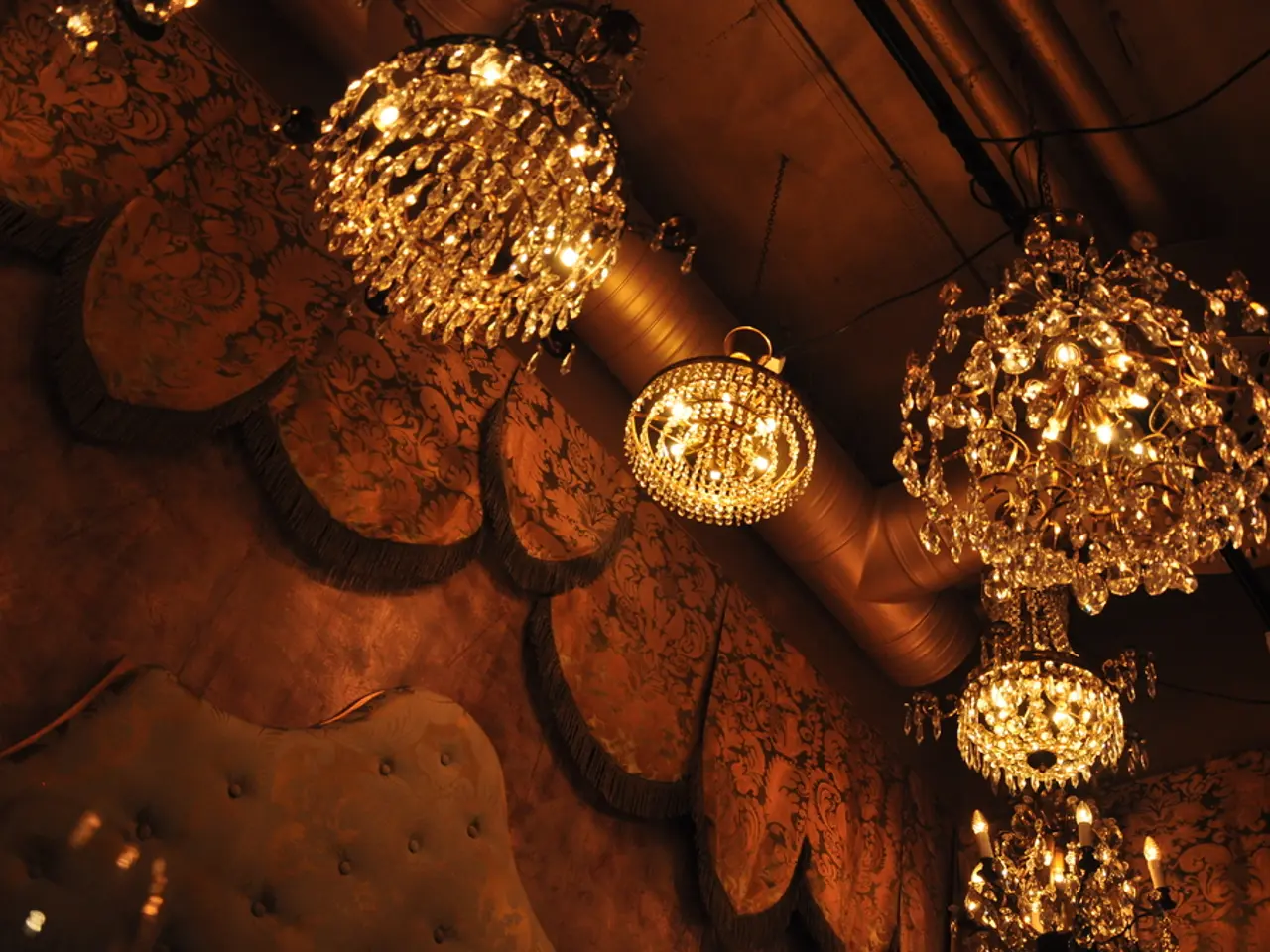Exploring the Dimension with Rough Textures on Walls and Ceilings for Extra Dimensionality: My Advice
Transform your living spaces with textured walls and ceilings that add depth and character. Follow these step-by-step techniques along with the appropriate materials to achieve a personalised look.
Prepare the Surface
Ensure walls or ceilings are clean, dry, and free of dust, dirt, or loose paint. Remove any fixtures or protect them with coverings.
Choose Texture Materials
Pick from a variety of options such as textured paint, plaster, joint compound, texture sprays, or wallpaper with embossed designs. Select based on desired effect and surface compatibility.
Prime the Surface
Apply a primer to improve adhesion and create a smooth base for texture materials. Priming is essential especially for ceilings or drywall.
Mix or Prepare the Texture Material
Follow manufacturer instructions. You may adjust consistency with water or additives to suit your technique (e.g., thicker for plaster texture, thinner for sprays).
Apply the Texture
Use tools such as trowels, rollers with thick nap (1/2 to 3/4 inch), brushes, sponges, or specialized texture combs. Avoid foam rollers on strongly textured surfaces. Techniques include stippling, swirling, combing, or stippling for walls; for ceilings, popcorn or knockdown textures are common. Work in small, manageable sections for consistency.
Allow to Dry
Drying times vary depending on texture type and thickness—from several hours to days.
Finishing Touches
Once dry, enhance with paint, glazes, or sealants. Use dry brushing, sponging, or color washes to highlight texture and add visual depth. For ceilings, priming before painting ensures even coverage without sanding.
Example of Material and Tool Choices:
| Texture Material | Tool(s) | Suitable Techniques | |--------------------------|----------------------------|---------------------------------| | Joint Compound or Plaster| Trowel, knife, brush | Swirling, combing, knockdown | | Texture Paint | Roller with 1/2–3/4” nap, brush | Stippling, stipple roller | | Spray Texture | Texture sprayer | Popcorn, orange peel, splatter | | Textured Wallpaper | Wallpaper tools | Embossed patterns |
This approach allows for customised depth and character on walls and ceilings by matching texture types and application techniques to room style and desired outcomes.
Safety Tips
- Wear goggles and a mask to avoid inhaling dust.
- Use a sturdy ladder and work in small area sections for safety.
Maintenance
- Clean the surface thoroughly to remove dust or grease before adding texture.
- Clean textured walls should be done using a soft-bristle brush or microfiber cloth to avoid damaging the texture.
- Avoid scrubbing textured walls to prevent flattening the surface over time.
With a little care, your room's character will remain intact for decades. A basic sponge application or orange peel spray can redefine a bathroom or hallway. For more complex textures, combining circles and triangles creates movement that flat walls lack. Layering metallic glazes over textured paint for light-catching drama is possible once comfortable.
Note: Outlines should be traced with chalk before cutting compound. For fresh drips, act fast and scrape still wet globs using a trowel edge. Choosing stencils 30% smaller than the wall area is recommended. Dust loves hiding in crevices and should be vacuumed monthly using a horsehair brush attachment.
Incorporate DIY textured walls and ceilings as part of your home-and-garden lifestyle, adding depth and character to your home-improvement projects. Select suitable materials such as DIY textured paint, plaster, joint compound, texture sprays, or embossed textured wallpaper to match your room's style and desired effects. Apply finishing touches like paint, glazes, or sealants to achieve a customized, personalized look for your lifestyle.




